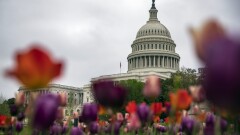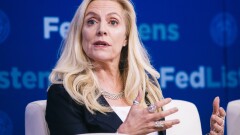WASHINGTON — As policymakers
In its May Financial Stability Report, the Federal Reserve concluded that corporate debt has increased since the end of the financial crisis and that the least creditworthy borrowers account for most of that growth.
Regulators are keeping an increasingly close watch on leveraged lending, said Fed Chair Jerome Powell in a speech last month. But with the heightened risk mostly attributed to nonbank entities, it is unclear which agency would be responsible for crafting a policy response. Last year, Comptroller of the Currency Joseph Otting said banks “really kind of stayed on the rails” with leveraged lending.
The Financial Stability Oversight Council met last week in a closed-door session and reviewed a presentation about leveraged lending, according to a readout of the meeting.
House Democrats sounded the alarm at a House Financial Services subcommittee hearing Tuesday, in which Rep. Gregory Meeks of New York, the chairman of the subcommittee on consumer protection and financial institutions, urged his colleagues to “consider the possibility” that leveraged loans are a systemic problem.
In a speech the same day at the Economic Club of New York, Bank of America CEO Brian Moynihan argued that the weakening of standards that has contributed to the high concentration of leveraged loans is something “we should worry about.”
“We don't see anything yet because the economy's good, the companies are making money," he said. "The issue that's there is in the leveraged finance."
In a downturn, Moynihan said, "It'll be ugly for those companies if the economy slows down and they can't carry the debt and then restructure it, and then the usual carnage goes on."
Yet House Republicans sided with the Trump administration-appointed regulators, arguing that the risk is overstated and that banks have built sufficient capital cushions to combat any threat to the economy.
Regulators and lawmakers have some options already at their disposal to enable defenses, or Congress could attempt to provide new tools. But it remains to be seem if officials want to deploy any new protective measures.
Here are six routes they could take:











